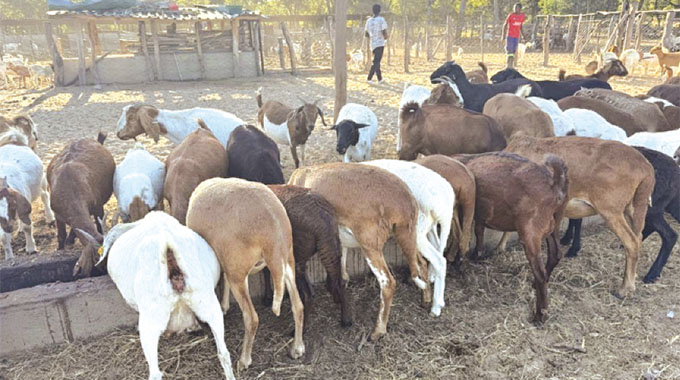Status of deforestation in Zim
The country’s forest resources fall under four main categories namely: woodlands, forests and trees in communal and resettled areas; forests and trees in the small and large scale commercial farming areas; woodlands and forests on state land and in protected areas; and exotic plantation forests.
Exotic timber plantations cover some 110 000ha of land, 40 percent of which is state owned and the rest privately owned. Woodlands on state land and in protected areas occupy about 6 million hectares. Gazetted forests cover some 0,8 million ha and national parks and other protected areas some 5,4 million ha.
Forests in communal and resettled farming areas cover some 10 million ha held under communal tenure or a permit system respectively. Woodlands and trees on large scale commercial farms cover about 7 million ha of land.
Background to deforestation
Energy challenges facing the country, have resulted in people resorting to cutting down of trees for use as wood energy. This is particularly marked in tobacco growing areas where wood energy is used for curing tobacco.
Due to the increase in the number of smallholder farmers entering into tobacco production there has been an increase in demand for wood fuel necessitated by the lack of financial resources to purchase coal and the high electricity costs. The shortage of electricity in the country has for now been the major catalyst for deforestation, which is threatening to reach unprecedented proportions.
Causes of deforestation
Agricultural expansion:
The harvesting of wood for energy, coupled with clearing of vegetation for agricultural expansion has resulted in massive deforestation particularly in peri-urban areas. It has been estimated that Zimbabwe is losing its vegetation cover at a staggering rate of 300 000ha per annum. Population pressure has resulted in excessive utilisation of forest resources leading to a rapid depletion of the forest resources in most areas.
Forest fires:
There has been an increase in fire incidences on forest and agricultural land in recent years. Many of the fires on forest land have been caused either by illegal settlers or farmers trying to prepare land for agriculture. In 2008, the Plantation Forestry Industry lost about 10 percent of their forests to fire, an area of about 15 000ha.
Indigenous demarcated forests recorded an area of over 157 000ha in 2008. Such huge loses to fire in a very short time, have a bearing on future supply of timber to the nation. To reduce fire incidences, the Forestry Commission is working with development partners such as the Food and Agriculture Organisation of the United Nations is implementing a programme on fire suppression and management in selected districts in Zimbabwe through community participation. This we hope will create a sense of resource ownership.
Illegal settlers/activity:
Illegal settlements on forestry land particularly on demarcated forest land brings with it illegal activities such as gold panning, animal and timber poaching, forest fires and deforestation.
Illegal poaching of wood for sale into urban areas is common in most forests around the country.
Communal and resettlement woodlands have been heavily depleted by urban dwellers as an alternative source of energy.
Forestry invasive pests and diseases:
Biotic factors have also caused loss of forest resources, for example Zimbabwe’s Miombo woodlands (Julbernardia-Brachystegia combination) are threatened by scale insects, which attack the stems of branches and cause defoliation and die-back.
Currently Zimbabwe is also under a serious threat from invasive insect pests such as the Sirex Wood wasp, the eucalyptus bronze bug and the eucalyptus gall forming wasp. The eucalyptus gall forming wasp is estimated to have caused damage valued at Kshs.1,5 billion in Eucalyptus species growth loss in Kenya annually.
Harvesting without replanting (Over-exploitation)
Due to the prevailing economic hardships, many commercial timber companies are failing to replant their stock, and this will obviously result in timber shortage in the market in future.
Effects of cyclones
The effects of cyclones terribly cause deforestation, with cyclone Eline having a devastating effect mostly in the commercial timber industry. The forest industry is still reeling under its effects well after it has gone.
The above factors can broadly be categorised into :
a) Land tenure issues
Land tenure, has, over the years been identified as a major underlying cause of deforestation in Zimbabwe. Although situations widely vary, the following can be highlighted as the most common:
l the non-recognition of the territorial rights of indigenous and other traditional peoples resulting in the invasion of those territories by external actors
the lack of legally-recognised land titles by local communities
spontaneous colonisation processes into the forests, stemming from inequitable land-tenure patterns in agricultural areas
large-scale unsustainable agriculture leading to a lack of fertile land
privatisation of forests in the benefit of large-scale private or corporate landowners
b) Resource management
The way in which natural resources are managed at the country level — expressed in explicit or implicit policies- was identified as a major underlying cause. Most of those policies result in negative impacts and are even conflicting with policies and practices aimed at forest conservation. Among the most common are the following:
lack of recognition of multiple values of forests, which are either visualised as a source of wood materials or as occupying land which could be dedicated to other activities, such as agriculture, cattle-raising or other
lack of empowerment and participation of local communities in decisions over forest management
the promotion of large-scale development projects with high negative impacts on forests
inappropriate and conflicting policies which affect forests
economic and other incentives which result in deforestation
issues of governance, including corruption, human rights abuses, inadequate enforcement of existing laws and lack of institutional capacity to adequately manage forests
dominance of industry’s interest in decisions which affect forests (timber, pulp and paper, mining, oil, shrimp farming)
c) Trade
Trade -both national and international- is neither good nor bad in itself. However, it has been identified as a major underlying cause (particularly within the current trade liberalisation process), linked to other underlying causes, such as:
unsustainable extraction of forest products
substitution of forests by other systems of production, particularly those aimed at the international market, such as pulpwood and other tree plantations, cattle-raising, shrimp farming, etc.
rising consumer demand resulting in unsustainable consumption patterns of a wide variety of products extracted either from forests or from productive activities which substitute forests
undervaluation of forest products via the externalisation of environmental costs
d) International economic relations
Underlying causes stemming from the current economic model are also causes of deforestation, but with different levels of importance following the high-consumption low-consumption (or rich-poor) country divide. Among the major identified underlying causes are:
macroeconomic policies imposed on less developed countries, including structural adjustment
external debt and its service/repayment
unfair trade relationships
poorly directed foreign aid programmes
lack of regulation of transnational companies in both “home” and “host” countries
The way forward/Interventions by F C
Given the challenges being faced by the Forestry Sector with deforestation, F C is currently undertaking the following programmes to address this problem:
Tobacco Wood Energy Programme (TWEP):
Under this programme F C has drafted a Statutory Instrument which will require all tobacco growers to establish woodlots of fast growing eucalypts that will provide wood energy for the curing of tobacco.
The objective is to reduce deforestation in tobacco growing areas.
Fire Protection:
With assistance from FAO Forestry Commission implemented a programme to train communities in fire protection emphasising on traditional leaders to take the lead in areas under their jurisdiction. Training was initially done in two Provinces i.e Mat. North and Manicaland with 200 community members having been trained in each province in the 2008/2009 season. This will spill over into the other provinces
Tree Planting:
This programme is aimed at capacitating communities to plant trees. Tree planting is launched annually by His Excellency the President at a chosen National venue on the first Saturday of December.
Woodland and Management of gazetted forests:
Woodland Management is aimed at conserving natural woodland by protecting them against tree cutting, fire and grazing. Most of these forests are in Matebeleland North Province. Activities being undertaken in the forests include forest protection from fires and poachers, habitat management for wildlife in the forest and silvicultural activities.
Forestry research:
FC is conducting a number of research programmes in support of the forest industry. The tree improvement program is the flagship programme for research. Significant gains have been achieved in development of trees with desirable characteristics such as stem form, wood density and adaptability. For example the Eucalyptus hybrid programme will directly benefit farmers under the TWEP project.
Training in Forestry and Wood Technology:
Forestry Commission conducts manpower training in the science, business and art of forestry development and strengthens the capacity of the forestry industry in wood utilisation. The training is offered at the Zimbabwe College of Forestry and the Forest Industries Training Centre in Mutare. The current enrolment at the training colleges is 100 students.
Regulation of forest sector:
FC is regulating the sector by ensuring that the nation observes and adheres to statutes. FC is currently enforcing SI 112 of 2001 which prohibits exportation of raw and primarily processed hardwood timber.
A number of Statutory Instruments have been proposed in order to improve the regulatory environment, among which include: the Forest (Conservation, Management, Harvesting, Movement, Utilisation and Trade in Forest Produce) Regulations, Registration and Licensing of Firewood Traders, Control of Cutting, Removal, Transportation and Export of gum tree poles, Conservation and Management of Timber Resources for Tobacco Wood Energy and Control of Forest Produce Movement.
Multilateral agreements:
FC is currently aware and is exploiting opportunities that multilateral agreements such as the Convention on Biological Diversity (CBD) and the UN Framework Convention on Climate Change (UNFCCC) are offering. FC has already participated in the “Traditional Medicines project in collaboration with MENRM under the CBD.
This project generated useful data on current status, utilisation, management and conservation of tree species with medicinal properties.
Several project proposals have been developed under the CBD theme of conservation of biological diversity in protected areas and these await funding by GEF and Degradation (REDD). With REDD, Local Communities can be rewarded for conserving their forests, so the approach works for both poverty alleviation and emissions reduction and will usher in new forest management regimes in Zimbabwe and Africa at large.









Comments